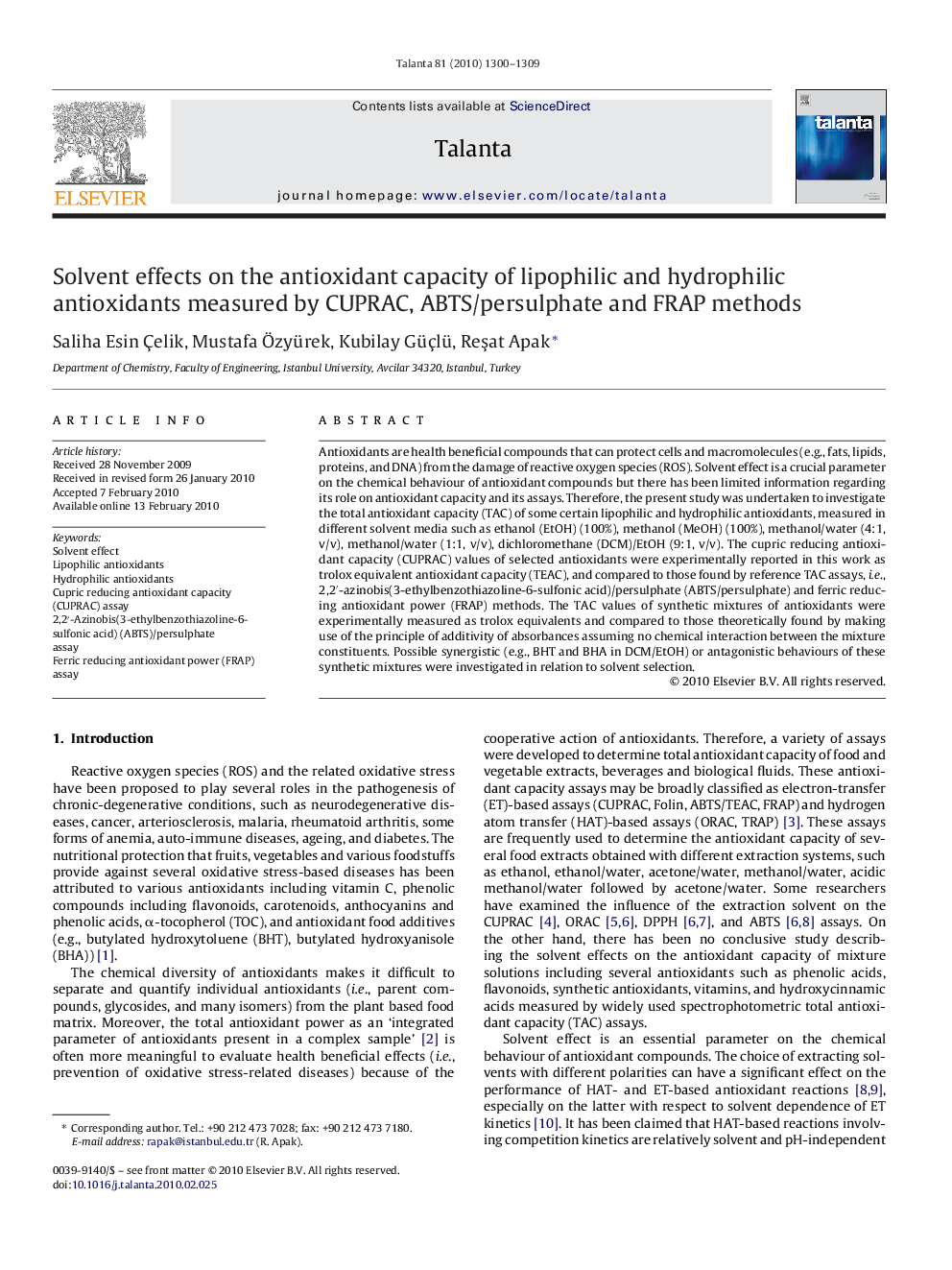| Article ID | Journal | Published Year | Pages | File Type |
|---|---|---|---|---|
| 1242630 | Talanta | 2010 | 10 Pages |
Antioxidants are health beneficial compounds that can protect cells and macromolecules (e.g., fats, lipids, proteins, and DNA) from the damage of reactive oxygen species (ROS). Solvent effect is a crucial parameter on the chemical behaviour of antioxidant compounds but there has been limited information regarding its role on antioxidant capacity and its assays. Therefore, the present study was undertaken to investigate the total antioxidant capacity (TAC) of some certain lipophilic and hydrophilic antioxidants, measured in different solvent media such as ethanol (EtOH) (100%), methanol (MeOH) (100%), methanol/water (4:1, v/v), methanol/water (1:1, v/v), dichloromethane (DCM)/EtOH (9:1, v/v). The cupric reducing antioxidant capacity (CUPRAC) values of selected antioxidants were experimentally reported in this work as trolox equivalent antioxidant capacity (TEAC), and compared to those found by reference TAC assays, i.e., 2,2′-azinobis(3-ethylbenzothiazoline-6-sulfonic acid)/persulphate (ABTS/persulphate) and ferric reducing antioxidant power (FRAP) methods. The TAC values of synthetic mixtures of antioxidants were experimentally measured as trolox equivalents and compared to those theoretically found by making use of the principle of additivity of absorbances assuming no chemical interaction between the mixture constituents. Possible synergistic (e.g., BHT and BHA in DCM/EtOH) or antagonistic behaviours of these synthetic mixtures were investigated in relation to solvent selection.
